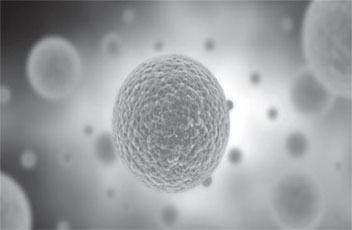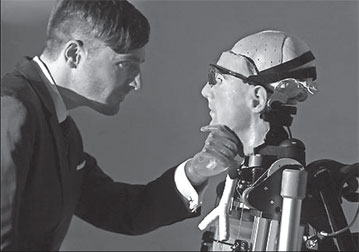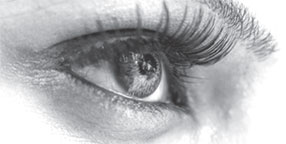
Millions of premature cancer deaths preventable
On World Cancer Day, UICC and International Agency for Research on
Cancer (IARC) reveal real-life impact of achieving goal.
 The Union for International Cancer Control (UICC) and the
International Agency for Research on Cancer (IARC) said that 1.5 million
lives which would be lost to cancer, could be saved per year if decisive
measures are taken to achieve the World Health Organisation's (WHO) ‘25
by 25’ target; to reduce premature deaths due to non-communicable
diseases (NCDs) by 25 percent by 2025. The Union for International Cancer Control (UICC) and the
International Agency for Research on Cancer (IARC) said that 1.5 million
lives which would be lost to cancer, could be saved per year if decisive
measures are taken to achieve the World Health Organisation's (WHO) ‘25
by 25’ target; to reduce premature deaths due to non-communicable
diseases (NCDs) by 25 percent by 2025.
Currently, 7.6 million people die from cancer worldwide every year,
out of which, four million people die prematurely (aged 30 to 69 years).
So unless urgent action is taken to raise awareness about the disease
and to develop practical strategies to address cancer, by 2025, this is
projected to increase to an alarming six million premature cancer deaths
per year.
“The estimate of 1.5 million lives lost per year to cancer that could
be prevented must serve to galvanise our efforts in implementing the
World Health Organisation's (WHO) ‘25 by 25’ target,” said Dr
Christopher Wild, Director of IARC.
“There is now a need for a global commitment to help drive
advancements in policy and encourage implementation of comprehensive
National Cancer Control Plans. If we are to succeed in this, we have a
collective responsibility to support low- and middle-income countries
who are tackling a cancer epidemic with insufficient resources.”
The 1.5 million lives lost per year represent 25 percent of the
estimated six million premature cancer deaths that will occur by 2025,
and the six million figure is itself based on population projections of
current numbers and aging.
On World Cancer Day, UICC and its members are urging the public and
governments alike to speak out with one voice to dispel damaging myths
and misconceptions on cancer. Under the theme “Cancer - Did you
know?”individuals and communities are encouraged to shed light on four
key cancer ‘myths’ and the corresponding ‘truth’.
Myth: Cancer is just a health issue Truth: Cancer is not just a
health issue. It has wide reaching social, economic, development and
human rights implications
Myth: Cancer is a disease of the wealthy, elderly and developed
countries - Truth: Cancer is a global epidemic, affecting all ages and
socio-economic groups, with developing countries bearing a
disproportionate burden
Myth: Cancer is a Death sentence - Truth: many cancers that were once
considered a death sentence can now be cured and for many more people
their cancer can now be treated effectively.
Myth: Cancer is my fate – Truth: With the right strategies, at least
30 percent of cancer cases can be prevented based on current knowledge.
Cary Adams, CEO UICC said, “This World Cancer Day UICC, its members
and partners urge everyone from individuals to governments to take a
stand against damaging myths on cancer. By truly understanding this
deadly disease, governments can develop appropriate strategies to reduce
premature deaths and reach the WHO ‘25 by 25’ goal. The figures today
announced by IARC and UICC reveal the fundamental human value of
achieving this target.
1.5 million people saved from an early death due to cancer is equal
to the entire populations of Philadelphia, Auckland, Barcelona or Maputo
each and every year.”
World Cancer Day
World Cancer Day takes place every year on February 4 and is the
single initiative under which the UICC, its members, partners and the
entire world can unite together in the fight against the global cancer
epidemic.
It should also be stressed that this assumes the 25 percent reduction
in overall mortality is spread in an even proportion across the main
NCDs (cancer, cardiovascular disease, chronic lung diseases and
diabetes).
This is actually not necessary for the ‘25 by 25’ target to be met,
as there could be more progress on cardiovascular disease than on
cancer, for example.
Meet Rex: the $1m bionic man with a working heart
Most human body parts can be replaced, say scientists, and here’s the
evidence
 When Luke Skywalker received a perfect bionic replacement for the
hand that was cut off in Star Wars Episode V, the idea of replicating
human organs and body parts seemed far-fetched. When Luke Skywalker received a perfect bionic replacement for the
hand that was cut off in Star Wars Episode V, the idea of replicating
human organs and body parts seemed far-fetched.
Thirty years later, the idea is no longer just science fiction.
Scientists, among them the creators of “Rex” - the world’s most complete
bionic man - believe they can now replicate about two-thirds of the
human body.
“We were surprised how many of the parts of the body can be
replaced,” said Rich Walker, managing director of the robotics team
Shadow, who built Rex. “There are some vital organs missing, like the
stomach, but 60 to 70 percent of a human has effectively been rebuilt.”
This is heralded, then, as the dawn of the age of bionic man - although
specialists caution that we are still feeling our way. Social
psychologist Bertolt Meyer, who also worked on Rex, has an interesting
perspective: he was born without his left hand and has a prosthesis.
“I have looked for new bionic technologies out of personal interest
for a long time and I think that until five or six years ago nothing
much was happening,” he said. “Suddenly we are at a point where we can
build a body that is great and beautiful in its own special way.”Not
everyone in the field believes the recent progress, impressive as it is,
places us on the road to complete replication of human limbs, organs and
tissue. “We have motors which can lift things but, if you want to mimic
the dexterity of a hand, we are not there yet,” said Prof Steven Hsiao
of the John Hopkins University in Baltimore.
“What we are beginning to achieve is building prostheses which look
like human body parts, but we are a long way away from making ones which
relay sensory information the way the human body does.” Prof Hsiao drew
the comparison between Star Wars and real life, saying: “The goal is the
scene in the film where Luke Skywalker gets his new hand tested and is
able to feel pain: we are not there. In 10 years, we will be able to
build a robot which has the dexterity to pick up a pen and write with
it, but it will not be able to send back sensory information.”
- The Independent
Unravelling the brain’s vision secrets
A study has identified the two areas of the brain responsible for our
perception of orientation and shape.
 Using sophisticated imaging equipment at York Neuroimaging Centre
(YniC), the research found that the two neighbouring areas of the cortex
– each about the size of a 5p coin and known as human visual field maps
- process the different types of visual information independently. Using sophisticated imaging equipment at York Neuroimaging Centre
(YniC), the research found that the two neighbouring areas of the cortex
– each about the size of a 5p coin and known as human visual field maps
- process the different types of visual information independently.
The scientists, from the Department of Psychology at York and the
Bradford School of Optometry; Vision Science established how the two
areas worked by subjecting them to magnetic fields for a short period
which disrupted their normal brain activity. The research which is
reported in Nature Neuroscience represents an important step forward in
understanding how the brain processes visual information.
Attention now switches to a further four areas of the extra-striate
cortex which are also responsible for visual function but whose specific
individual roles are unknown.
Researchers used functional magnetic resonance imaging (fMRI)
equipment at YNiC to pinpoint the two brain areas, which they
subsequently targeted with magnetic fields that temporarily disrupt
neural activity. They found that one area had a specialised and causal
role in processing orientation while neural activity in the other
underpinned the processing of shape defined by differences in curvature.
Prof Morland said: “Measuring activity across the brain with FMRI
can't tell us what causal role different areas play in our perception.
It is by disrupting brain function in specific areas that allows the
causal role of that area to be assessed.
“Historically, neuropsychologists have found out a lot about the
human brain by examining people who have had permanent disruption of
certain parts of the brain because of injury to it. Unfortunately, brain
damage seldom occurs at the spatial scale that allows the function of
small neighbouring areas to be understood. Our approach is to
temporarily disrupt brain activity by applying brief magnetic fields.
When these fields are applied to one, small area of the brain, we find
that orientation tasks are harder, while disrupting activity in this
area's nearest neighbour only affected the ability to perceive shapes.”
Dr McKeefry said: “The combination of modern brain scanning technology
along with magnetic neuro-stimulation techniques provides us with a
powerful means by which we can study the workings of the living human
brain.
“The results that we report in this paper provide new insights into
how the human brain embarks upon the complex task of analysing objects
that we see in the world around us.
“Our work demonstrates how processing of different aspects of visual
objects, such as orientation and shape, occurs in different brain areas
that lie side by side. The ultimate challenge will be to reveal how this
information is combined across these and other brain areas and how it
ultimately leads to object recognition.”
- MNT
Did ancestors of modern humans interbreed with Neanderthals?
A new finding has cast doubts on the theory that ancestors of modern
humans interbred with Neanderthals over thousands of years.
 Scientists have re-dated fossil bones from two sites in southern
Spain and discovered they are much older than previously thought. Scientists have re-dated fossil bones from two sites in southern
Spain and discovered they are much older than previously thought.
According to new evidence, it is unlikely Neanderthals and modern
humans ever lived together in the region. Researchers now think the
Neanderthals had long gone before the arrival of the first Homo sapiens.
Since the 1990s experts have believed the last Neanderthals sought
refuge in the Spanish peninsular and finally died out around 30,000
years ago.
That would have provided easily enough time for the Neanderthals to
mix their DNA with that of modern humans, which are believed to have
colonised Spain more than 10,000 years earlier.
But the new research using an improved dating method indicates that
the Neanderthal occupation of Spain only lasted until around 45,000 to
50,000 years ago.
Interbreeding has been suggested as the reason why traces of
Neanderthal DNA can be found in people living today, especially
Europeans.
However the issue has divided experts. Some believe the genetic link
is due to Neanderthals and modern humans having a common ancestor which
may have lived in North Africa.
Neanderthals and modern humans are distantly related sub-species of
ancient human. Both are thought to have emigrated to Eurasia from
Africa, but at different times.
When modern humans branched out they replaced other human species
such as Neanderthals and Homo erectus that had gone before them.
Scientists carrying out the new research tested several animal bones
found alongside ancient stone tools and bearing cut marks and other
signs of human interference.
Previously, radiocarbon dating had supported the idea that the bones
were evidence of late surviving Neanderthals.
Lead researcher Dr Rachel Wood, from Oxford University, said: “Our
results cast doubt on a hypothesis that has been broadly accepted since
the early 1990s that the last place for surviving Neanderthals was in
the southern Iberian peninsula. “Much of the evidence that has supported
this idea is based on a series of radiocarbon dates which cluster at
around 35,000 years ago. Our results call all of these results into
question.”
Radiocarbon dating uses the decay rate of a carbon isotope to
estimate the age of organic material. It is said to be unreliable for
dates older than around 50,000 years, partly because of false readings
caused by accumulated contaminants.
The new work, reported in the journal Proceedings of the National
Academy of Sciences, employed a process called ultra-filtration to
purify bone samples and ensure they were free from contamination.
One bone from a wild goat, found at a similar depth to Neanderthal
fossils, was previously dated to around 33,300 years ago. The “cleaner”
dating process showed that in fact it was more than 46,700 years old.
- PA
Why mice and men, cats and dogs like to be stroked
The stroking impulse could have evolved out of the need to keep fur
and hair free from parasites. A gentle stroke on the head or arm could
feel pleasant because these areas of the skin contain specialised nerve
cells that send “pleasure pulses” to the brain when stimulated,
scientists have discovered.
 The existence of special pleasure detectors in hairy skin has long
been debated but now researchers have finally found strong evidence of
their existence - in laboratory mice at least. The existence of special pleasure detectors in hairy skin has long
been debated but now researchers have finally found strong evidence of
their existence - in laboratory mice at least.
The discovery could explain why many mammals, from cats and dogs to
humans, take pleasure in caressing and grooming one another, the
scientists suggest. It could have evolved out of the need to keep fur
and hair free of parasites. The study, carried out by David Anderson and
colleagues at the California Institute of Technology in Pasadena, has
shown that the hairy skin on the back legs of mice contains sensory
nerve endings that respond to pleasurable rubbing, but not to pain.
The study, published in Nature, showed that certain types of neurons
or nerve cells in the hind legs of mice were activated when stroked.
Unlike pain-detecting neurons, these nerve cells are not covered by a
protective fatty sheath, which causes the nerve impulses to the brain to
be transmitted at slower speed than usual.
“Despite numerous physiological studies, molecularly defined sensory
neurons that detect pleasant stroking of hairy skin in vivo have not
been reported,” the scientists say in their study.
The new kind of nerve cells, called C-fibres, only appear to exist in
hairy skin.
However, it has not yet been shown that only certain C-fibres in
humans are dedicated to pleasure sensing.
- The Independent
|



